Not long ago, mt58 picked up on some UK record chart stats I’d quoted.
And asked a question:

He was curious to know if the UK charts are analogous to Billboard and requested a primer.

mt’s initial query was, “Do they have the same kind of legacy, or is it a newer thing?
How could I refuse?
Simple answer to that is: yes to the legacy, they have a massive cultural footprint. But to whether its a newer thing?
It’s complicated.

Way more than the history page of the Official Charts Company (OCC) website would have you know. There’s dueling formats, contentious decision making and a revision of history.
Plus: Billboard has a cameo role!

My Guinness British Book of Hit Singles (7th edition from 1989) that I practically memorised as a teenager told me that the UK chart began in November 1952.
The OCC website says the same. Billboard’s Hot 100 came into being in August 1958.
Case closed. The Brits got there first.

(Kind of…)
The Hot 100 was inaugurated in 1958.
But Billboard was publishing various record sales charts back into the 1940s.
Sheet music sales charts go much further back on both sides of the Atlantic.
That first UK chart, titled the “Record Hit Parade,” was published by the New Musical Express (NME) on November 14th 1952.
It was initially a one man operation put together by Percy Dickins.

He called a selection of stores for their top ten sellers, and converted them into a chart on a points basis. Each retailer’s #1 got 10 points, down to one point for a #10. With that, he produced a Top 12.
There was only a small panel of retailers. Accounts vary, but it seems he contacted 15 to 25 per week.

The first chart, topped by Al Martino’s “Here In My Heart,” was an affront to numeracy, with 15 entries filling the 12 places.
The points system, plus the small number of retailers and the fact there weren’t that many records available resulted in several ties.
We had two #7s… but rather than move onto #9 we still had a #8. Actually, as a result of another tie we had two #8s. With two #11s for good measure.

For added confusion, the “Record Hit Parade” was tucked away on page 8 – while on the back page were more charts courtesy of an arrangement with ‘The Billboard’ to reproduce its ‘Music Popularity Charts’.

One of these was the “Top Tunes In Britain,” which ran to 24 songs, and also had Al Martino at #1.
How the Top Tunes In Britain was compiled and why it was sourced from a US publication, I have no idea.
Whatever the scale and the confusion: it was up and running. In 1954 it extended to a top 20 and in 1956 to a top 30.
US dominance was a feature of the early charts.
It was April 1953 before The Stargazers had the first homegrown #1. Through the whole of the 50s only 30 of the 94 #1 singles were British. Come the 60s: Cliff Richard, The Shadows and some guys from Liverpool played a big part in turning that round.
One anomaly of the NME chart is that it simply reflected the biggest selling records. Singles were by far the most popular format but the occasional album sneaked in.
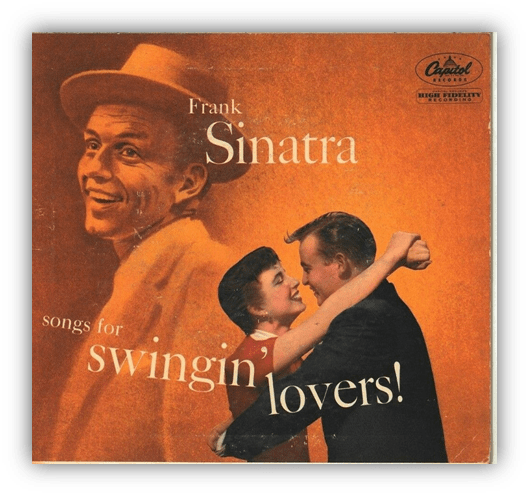
In July 1956, Frank Sinatra’s Songs For Swingin’ Lovers was at #15. It would be June 1957 before the first album specific chart was published by Record Mirror.
The paucity of albums reflected by it being limited to a Top 5 and that a year after release, Songs For Swingin’ Lovers was #1.
As late as November 1968 The Beatles’ White Album debuted at #20 on the NME Top 30, despite them having long since implemented a separate album chart.
By the end of the 50s a number of competitors were compiling charts.
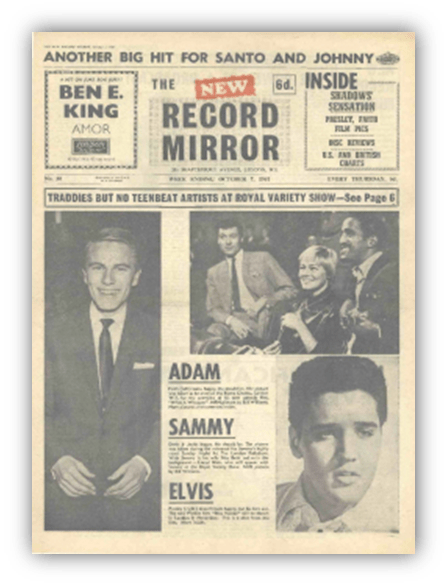
Record Mirror joined the fray in 1955.

Followed by Melody Maker in 1956,

and Disc in 1958.
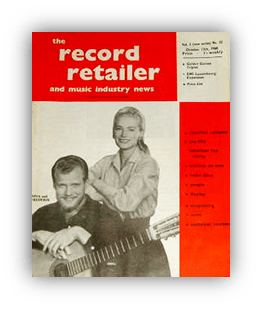
Record Retailer joined in come 1960. This was a trade publication of the Independent Record Retailers Association.
It appears to have been the least regarded, but their decision to compile a Top 50 rather than 30 would have consequences later on.
Over on the radio, there wasn’t any greater clarity.
The BBC had a monopoly on radio broadcasting until 1973, which left the youth of the 50s and 60s poorly served.
Pick Of The Pops was broadcast from 1958 on the BBC’s Light Programme station, and from 1967, aired on its successor, Radio 1. The Light Programme was the only British based station to play pop music – but this was only in small doses.

POTP featured a top 20 that amalgamated the NME, Melody Maker, Disc and Record Mirror charts and from 1962 incorporated Record Retailer. It used a points-based system leading to further issues with ties.
Most notably producing a three way tie for #1 in 1968 between:
- The Bee Gees: I’ve Gotta Get A Message To You
- Beach Boys: Do It Again
- and Herb Alpert: This Guy’s In Love With You
The way around the broadcasting legislation was to operate from outside of the UK.
Radio Luxembourg was an English language station with a powerful transmitter that just about reached Britain.

They pivoted towards the growing teenage market in the late 50s / early 60s including broadcasting the NME chart.
Pirate Radio arrived in 1964. Rather than a non stop playlist of sea shanties and quizzes to locate the spot marked by X, these were pop pirates operating from boats in international waters to evade the law.

It had a brief but massive impact on the cultural landscape, giving a youthful audience what the BBC didn’t.
Before the Marine Broadcasting Offences Act put most of them out of business in 1967, they produced their own charts based on whatever metric they saw fit.

Songs they liked the most, most played songs on their station and, given that they were operating outside the law. Whatever songs record companies were willing to pay to see hyped up the charts.
1964 also saw the launch of Top Of The Pops on BBC TV.
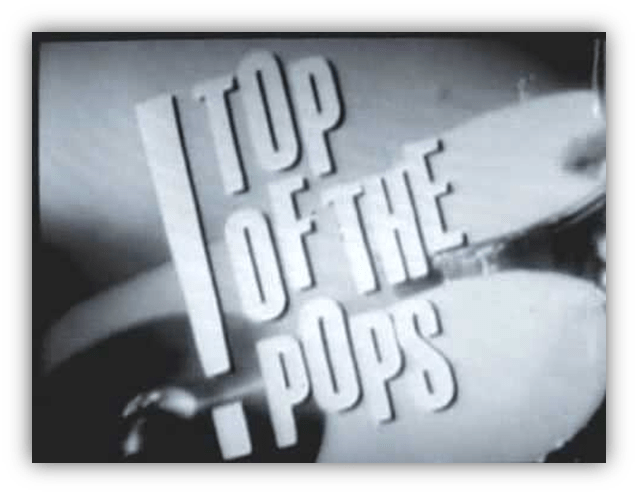
They used the same amalgamated chart as Pick Of The Pops.
The charts were now more visible than ever. Only problem was there were more charts than ever.
The NME boasted the largest circulation in the world for a weekly music publication. They and Melody Maker put more resources into their charts, extending their panels of retailers into the hundreds to make them more authoritative. Record Retailer lagged well behind, in the early 60s its top 50 was based on figures from as little as 30 stores. It did pick off one competitor, as Record Mirror bowed out of the chart race in 1962, carrying Record Retailers’ instead.
A big drawback to Record Retailer was that as a trade publication, it wasn’t readily available to the public.
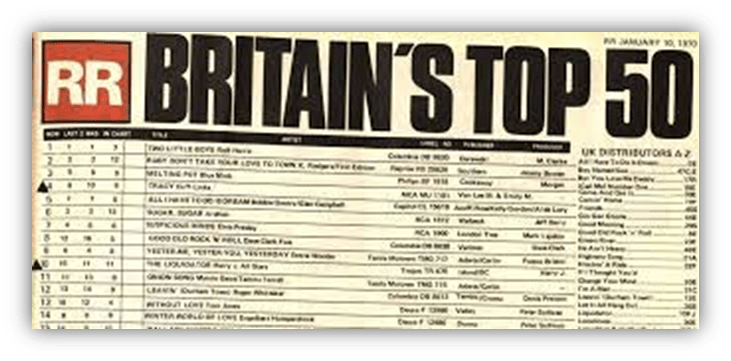
The only time they would come into contact with it was seeing its Top 50 displayed in a record store. Assuming the store didn’t display a rival chart or make up their own.
Regardless of how many stores the various music papers sampled they all had one common flaw: The biggest singles retailer was Woolworths.

Just about every town had one, but they weren’t included in any of the sampling at this point.
In 1969 an effort was made to bring clarity to the charts, due in no small part to that three way tie.
The BBC, Gramophone Record Retailers Association and Billboard, (since 1966 the owners of Record Retailer) commissioned the British Market Research Bureau (BMRB) to compile a sales based chart extending the panel to 250 stores per week. This was in line with the numbers NME and Melody Maker were sampling and with 50 in reserve so that the selection would change on a regular basis. The NME and Melody Maker were invited to take part but opted to continue on their own.

It wasn’t yet termed the “official chart,” but from this point on, it was in effect: the pre-eminent version.
This new venture still had issues. Sales figures were recorded by hand from Monday to Saturday, in line with store opening (it wasn’t until 1994 that Sunday opening became a thing). The figures were posted to Record Retailer ready for the chart to be announced on Tuesday. The tight turnaround reliant on the postal system led to a struggle to get figures in on time, often having returns from less than 100 stores with which to compile the chart.
A postal strike in 1971 didn’t help. During the strike, the singles chart reduced from 50 to 40 entries and was kept afloat by phoning retailers.

And they gave up on the album chart entirely. Not that you’d know from looking at chart history; the weekly album charts are still there in the database. They just used Melody Maker’s data to fill the gap.
The competition fell away in the 70s.
Disc ceased publication in 1975 and although NME and Melody Maker continued compiling their own charts through to 1988, they put less focus on them. By the early 70s they were concentrating on the more serious albums market.
What did have a momentous impact on chart history was publication of the Guinness Book Of British Hit Singles in 1977.

A statistical paradise listing every hit single by every act. Given the plethora of charts they understandably opted to simplify matters.
The NME as the oldest chart was used from 1952 to 1960. From 1960 they switched to Record Retailer. Largely on the basis that it provided a top 50 whereas everyone else only compiled a top 30 and as it was a trade publication had an air of being representative of the industry.
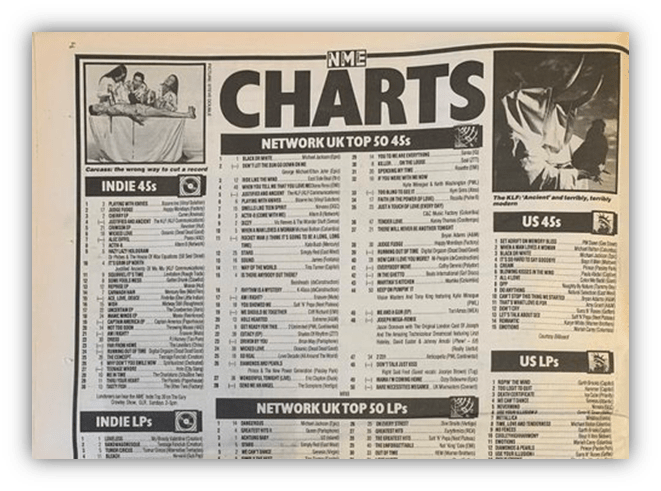
The downsides being the lack of public recognition and the much smaller panel size which could impact on its accuracy. Particularly further down the charts where lower sales figures were more likely to lead to greater disparities.
For the most part the competing charts did come up with the same #1 – but it didn’t always work out.
According to my copy of the 7th Edition, The Beatles had 17 #1s, starting with From Me To You. The OCC website today confirms this.

What isn’t apparent is that Please Please Me topped the NME chart and at the time was accepted as their first #1. The history told from 1977 says it only reached #2.
For The Beatles, 17 rather than 18 #1s isn’t so bad.
But others had their only #1 wiped from official history.
Between 1960 and 1969 there were 16 NME #1s that didn’t top the Record Retailer chart, including nine acts that lost their only #1.

Joe Brown who had his expunged from the records is quoted as saying:
“I hate that book. It has deprived me of my only number one, and I’m unlikely to get another.”
The flipside is there are 14 records now recognised as official chart toppers despite not being seen as such at the time.
For myself and others not old enough to remember the 60s I had no reason to doubt the authority of my Hit Singles book. And the OCC website does nothing to reflect the contentiousness of this muddled history.
That’s all for now. Next week, I’ll bring the story up to date.
There’ll be more rule based chicanery, stories of epic chart battles – and consideration of where the charts are now.
Let the author know that you liked their article with a “Green Thumb” Upvote!


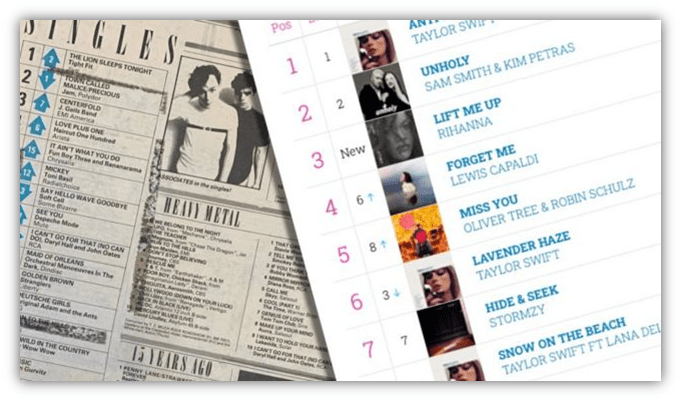


This is fascinating, JJ. Thanks for the peek at a convoluted history. Look forward to seeing what’s next. (Also, it’s pretty amazing to have a three-way No. 1 tie in 1968 and have none of the songs be “Hey Jude.”)
Thanks Chuck. That three way tie was right before Hey Jude took over. The revised official history now has Beach Boys top for a week, followed by Bee Gees for a week and then Hey Jude ascended to the top. Herb Alpert was the loser, This Guy’s In Love With You was only #3 on the Record Retailer chart so that’s its official position now.
BOOOOOOOO!!!!!!!!
https://youtu.be/o8ByJ1C0iR4?si=ia95MSXOCaGp0mva
(I love this song. Don’t @ me!)
I spy Mr Blobby!!!! 😁
Not to hijack this thread, but Vdog, I sincerely hope all family and friends of yours back in Maine are safe. Isn’t Lewiston your hometown?
Thanks, dutch, I’m from 50 miles north of there. My family’s fine and I’ve checked in with all my friends in the area. They’re all safe, too, though one lives about five miles from the shooter’s house. He’s staying home today. The whole county is on lockdown.
Remember, everyone, elections matter. Vote.
Why did I think you were from the far north, like Presque Isle, Aroostook County? Crossed wires, no doubt… I used to work with the Tribes up there, so in my mind, that’s Micmac & Maliseet country…
No kidding? What did you do there?
My grandparents were from Aroostook but from both sides of the border around Fort Kent and Madawaska. My dad was born in Lewiston because his father moved there to work in the shoe mill, but they later moved to the Waterville area.
Water and wastewater projects. TBH while I was there (there being Manlius, NY — I oversaw a very large geographic area from Maine to Florida to Texas, but we had an office in Bangor), we didn’t have many big projects for the Micmacs and Maliseets. We had a lot more work going on with both of the Passamaquoddy Tribes (Pleasant Point and Indian Township) and Penobscot.
So you were about halfway between Maine’s two major metroplises? And Madawaska and Fort Kent — that’s Canada in all but name — right on the border! Cool (literally!)
I never spent much time up there, but it sure is beautiful. In the 80s, I’d go up there on business and take Route 2 in Canada rather than US Route 1 because it was a much better road. It was easier crossing the border then, of course.
So you were in Washington County? That’s a pretty area, too, though kind of desolate. I thought the Maliseets were more in New Brunswick than Maine.
Yep, I visited Washington County when I went to see both Passamaquoddys. The Micmacs and Maliseets exist on both sides of the border (their existence predated that border pretty substantially). The Maliseets land in the U.S. is around Houlton, while the Micmacs are more in the Presque Isle / Caribou area…
I don’t think I’m tough enough for it anymore either! However, I like to think I look good in plaid flannel and a touque.
We’ve gotten pretty far afield from JJ’s topic, but it does relate back to my Cajun & Zydeco article. For the uninitiated, “Micmac” and “Mi’kmaq” are alternate spellings for the same tribe’s name.
And yes the country is beautiful!!! Pleasant Point is right on the coast by Passamaquoddy Bay. Something about that rural Maine lifestyle seems very appealing to me, but I don’t think I’m tough enough for it.
Wait, an article on the history of music AND its lists?
NOM NOM NOM.
I had to read this a few times JJ, to really absorb the various parties and connections. Just dizzying trying to keep up, kudos for writing it in a way that made sense of something nonsensical!
Why, it sounds like various government offices who all do the same work but insist their way is the best way and refuse to combine forces…..
I had to put in a lot of time to absorb the various parties and connections when researching and writing it!! This one took on a life of its own in prepping it. I knew that various publications had their own charts but I thought it was still relatively straightforward. Once I started delving deeper I realised there was a mass revision of history and it was a lot more complicated and haphazard than I thought. I had no idea about the initial BBC chart and that three way tie.
Found myself in dark corners of the Internet reading forums with a small but extremely dedicated band of chart historians who are still angry at the Guinness Book Of Hit Singles take over, arguing about which was the most accurate chart and turning up new details.
And on that note and as a teaser to the concluding part, we’re upto 1977 so I’ll be starting next time with the most notorious chart battle between The Sex Pistols and Rod Stewart (and Kenny Rogers it turns out!). A subject which is still generating many angry internet forum claims and counterclaims.
This is great, JJ. I used to pick up copies of NME every so often but I had no idea about their importance to the charts. Good stuff.
NME was my music reading material of choice through the 90s. For the alternative / indie music fan you were either NME or Melody Maker as the weekly low quality inky fingered paper and Select, Vox or Q as the glossy monthly option. All now long gone other than NME continuing as an online only shadow of its former self.
Admittedly, I don’t have a whole lot of interest in music charts for their own sake. And your piece here highlights part of why that is: a lot of it is arbitrary!
It probably doesn’t help that I came of age in the 90s, when the Billboard Hot 100 chart had jumped the shark, first with the singles-only rule and then following the media consolidations in the wake of the 96 Telecommunications Act. From the moment I started to discern what music seemed important at the time, the charts failed to reflect that.
Still, I am interested broadly in what’s popular and what’s not, and why. And all of the others details that can help tell a story about a culture. I appreciate all of the work that you put in here. Charts are no less BS in my eyes, but it’s an interesting data-driven cultural snapshot!
I always thought that our chart being purely sales based made it a lot simpler – which it kind of was when the only option available was a 7 inch single. Notwithstanding the fact that there were so many competing charts and methodologies behind them. As we’ll see there’s still a lot of arbitrary decision making to come that belies the notion of simplicity in purely counting sales. Even before we reach the digital age where sales are dwarfed by streaming, the proliferation of formats in the 80s meant that a lot of rules were put in place to police how the chart worked.
A RIVETING read! Just started reading Going For A Song: A Chronicle of UK Record Shops, so this is a nice compliment (also continuing to inch through Staney’s Let’s Do It). I am sure Going For A Song will get to the various charts, but fascinated that Woolies did not contribute to the stats (for some time) and I assume this would have had a substantial impact. Song does mention the Woolies-only albums that included popular songs, but sung by non-named artists. Fond memories of the Wimbledon High St. Woolies, where I would visit back in ’87 (Our Price was across the street). The Top 40 singles were on display in the music section. Also remembering the NME and Melody Maker and looking to these for the indie charts. I’ve got the 2006 Guinness Book, which combines Singles and LPs. Bible status!
I’ve not come across Going For A Song before, sounds right up my street.
I lived out in the sticks in Northumberland. The nearest town of Ashington had a Woolies, it was the only shop in town that sold records so plenty of my early singles purchases came from there. I remember the wall of Top 40 singles, I’m sure they also stocked a small selection of that weeks new releases and a few that were outside the top 40. It was an hour on the bus to get to the metropolis of Newcastle with the riches of an Our Price, HMV and Virgin – and once I got older discovered the small independents and 2nd hand stores.
The UK published a year in music annual called The Rock Yearbook. The highlight of the book was the blurbs by all the music tabloids of the year’s notable US and UK albums. There was a decided bias. I remember John Mellencamp’s Uh-huh described by Melody Maker as “Awful. Music for hamburgers.”
Who’s Afraid of the Art of Noise was an excellent choice for Album of the Year.
The book also showed a week-by-week comparison of the US and UK charts. The two charts couldn’t have been any more different. When Live Aid was announced, I thought, oh, great. I was curious about Alison Moyet, The Style Council, and Status Quo; three artists that had no island presence.
Maybe they don’t like hamburgers as much as we do, either. “Music for hamburgers” would not be much of an insult here.
Music for hamburgers wouldn’t be an insult here anymore. In the 70s/80s though? Definitely.
It took us a while to catch on. If you wanted a burger at that point your choice was basically Wimpy. Now there’s a brand name that screams alluring aspirational delights.
I’ve just been looking up the Rock Yearbooks and from this link the home acts got plenty of opprobrium heaped on them as well. You’d almost think it was a competition to come up with the most inventive ways of trashing reputations. The review of Jesus and Mary Chain’s Psychocandy that it sounds like a Black and Decker coming through the wall is pretty accurate though.
https://popdose.com/jesus-of-cool-the-rock-yearbooks-1981-89/
I’d say that things have calmed down now the traditional music press has been decimated. Irreverent and scabrous reviews have largely been replaced with considered opinions. Which on one hand is more pleasant though not nearly as amusing.
Some guy on the UKMix forums is making a comparison of the competing UK charts from 1955 to 1969 (he’s currently in 1961): https://www.ukmix.org/forum/chart-discussion/chart-analysis/11114474-the-definitive-combined-music-papers-chart-1955-1969